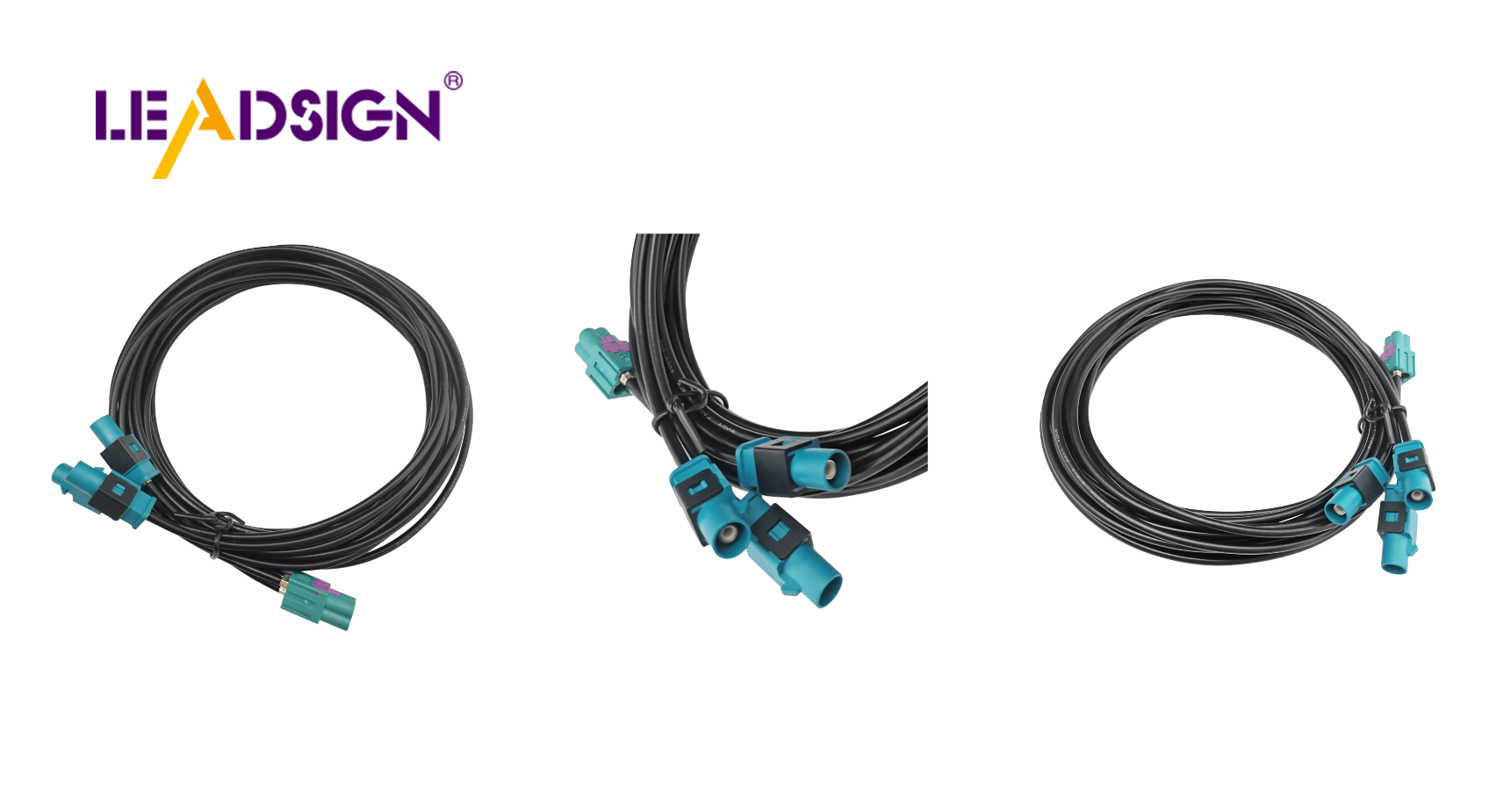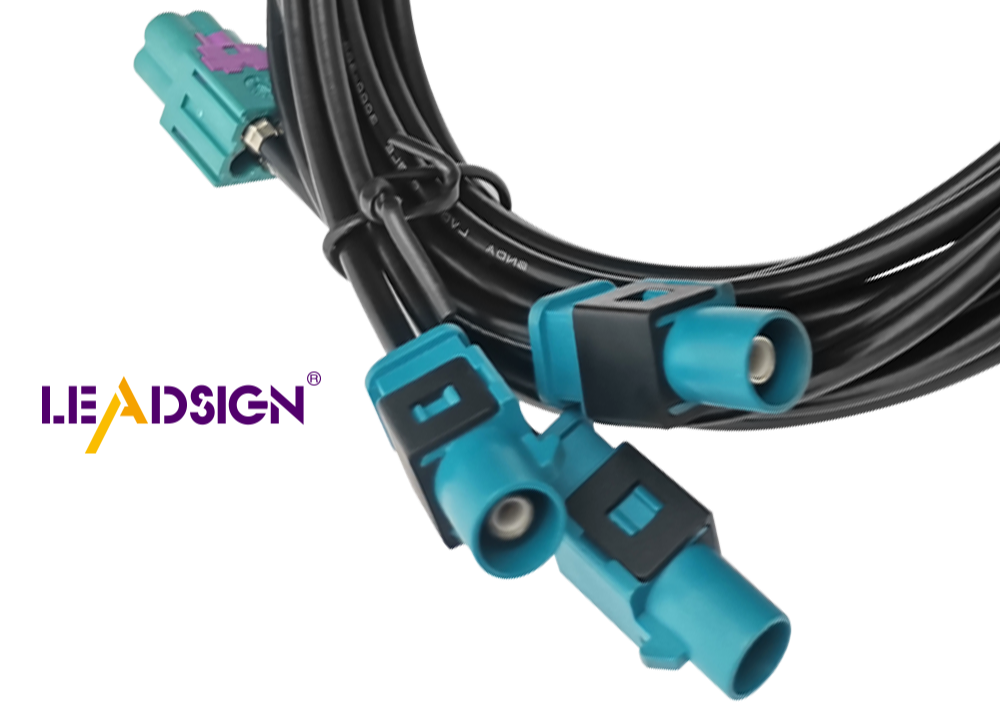Understanding Auto Wire Connector Types: A Practical Guide

Automotive wire connectors play a crucial role in your vehicle's electrical system, facilitating the smooth transfer of electrical signals between components such as the engine and radio. As vehicles increasingly incorporate safety features and rely on electrical systems, the importance of high-quality connectors has grown. There are various types of wire connectors automotive, each designed for specific tasks to ensure robust connections. These connectors are essential for maintaining the efficiency and safety of modern vehicles.
Basics of Auto Wire Connectors
Definition and Purpose
What are Auto Wire Connectors?
Auto wire connectors are key parts in a car's electrical system. They link different electrical points, helping circuits work well. These connectors come in types like wire-to-wire, wire-to-board, and board-to-board. Each type fits certain needs in the car, making sure all electronic parts talk to each other right.
Why are they essential in automotive systems?
You need auto wire connectors for your car's electrical system to work well. They help signals move smoothly between things like sensors and switches. Without them, your car's electronics might not work right, causing safety problems or bad performance. Good connectors from an Auto Electrical Connector Kit have features like being dust-proof and waterproof. This makes them easy to use.
Key Components
Conductors
Conductors let electricity flow through them. In auto wire connectors, conductors are often made of copper or aluminum because they carry electricity well. You need conductors to send power across your car so all parts get the energy they need.
Insulators
Insulators stop electricity from going where it shouldn't go. They cover conductors to keep the current on track. This is important to avoid short circuits and keep your car safe. Insulators are usually made of plastic or rubber that don't let electricity pass through easily.
Terminals
Terminals connect wires inside auto wire connectors securely. They come in shapes like ring, spade, and butt splice for different uses. Automotive Connectors often have terminals that are easy to put together or take apart, keeping wires connected safely.
By knowing these basics about auto wire connectors, you see why they're vital for your car's electrical system. Picking the right ones helps your vehicle run safely and smoothly from engine to radio.
Types of Auto Wire Connectors

Knowing different wire connectors is important for your car's electrical system. Each kind has a special job and benefits. Let's look at some common types.
Blade Connectors
Features and Uses
Blade connectors, also called spade connectors, are flat and thin. They are used when you need to connect or disconnect wires quickly. These are great for things like hooking up speakers in your car. Their design makes them easy to insert and remove.
Good and Bad Points
Good:
Easy to use.
Cheap and easy to find.
Works for low or medium power.
Bad:
Not good in places that shake a lot.
Can get loose if not tight enough.
Butt Connectors
Features and Uses
Butt connectors join two wires end-to-end securely. You use them when you want a strong, lasting connection. They are often used in fixing or changing car wiring. These keep wires connected well, so they don't come apart easily.
Good and Bad Points
Good:
Makes a strong link between wires.
Great for permanent setups.
Keeps moisture out with heat shrink tubing.
Bad:
Needs tools to attach.
Hard to take apart once set up.
Ring and Spade Connectors
Features and Uses
Ring and spade connectors connect wires to blocks or screws. You see them in battery links or grounding tasks. The ring fits tightly around bolts; the spade is easy to take off.
Good and Bad Points
Good:
Strong, steady link.
Simple to put on or take off.
Handles high power well.
Bad:
Needs tools for setup.
Might need extra parts like screws.
By knowing these wire connectors, you can choose wisely for your car's electrical work. Each type has its own pros and cons, so pick what suits you best.
Quick Disconnects
Features and Uses
Quick disconnects, also called quick-connect terminals, make it easy to join or separate wires without tools. They are handy when you often need to change parts. You can find them in cars for things like speakers and lights. These connectors come in different sizes and shapes, such as male and female ends, to fit various wire needs.
Main Features:
Simple to use
Many sizes and shapes
Good for frequent changes
In cars, quick disconnects help with parts that need regular care or swapping. They let you switch parts fast without rewiring, making them popular for mechanics and DIY fans.
Pros and Cons
When thinking about quick disconnects for your car, consider their good and bad points.
Pros:
Easy Use: Connect or disconnect wires quickly without tools.
Flexible: Fits many car uses.
Handy: Great for parts needing regular swaps.
Cons:
Loose Connections Risk: If not tight, they can loosen over time.
Low Power Limit: Not great for high power; best for low to medium power.
Knowing about wire connectors like quick disconnects helps you pick the right ones for your car's electrical system. Choosing well ensures your car works safely and smoothly.
Picking the Right Connector
Choosing the right connector is important for your car. It helps all parts work well and safely. You need to think about a few things to choose wisely.
Things to Think About
Power Needs
First, check what power your system needs. Different connectors can handle different amounts of electricity. Pick one that matches the power it will carry. Using a weak connector can cause overheating and problems.
Weather and Conditions
Next, consider where the connector will be used. If your car faces rain, dust, or heat, get connectors with protection. Look for ones that are waterproof or dustproof. These features help them last longer in tough places.
Fit with Wire Types
Lastly, make sure it fits your car's wires. Connectors come in many sizes and shapes for different wires. Check if it matches the wire size and cover type. This stops loose connections and keeps things working right.
Mistakes to Avoid
Ignoring Ratings
A common mistake is ignoring ratings on connectors. You might use any connector you find, but this can cause trouble. Always check if it meets your system's needs by looking at maker’s info.
Forgetting Environment
Another mistake is not thinking about where it's used. Not all connectors work well everywhere. If you ignore this, they might wear out fast or fail early.
By knowing these points and avoiding mistakes, you can pick the right wire connectors for your car. This choice helps keep your car safe and running well.
Best Ways to Install
Putting in auto wire connectors right helps your car's electrical system work well. Follow these steps for a strong and safe connection.
Tools You Need
First, get the tools you need. The right tools make installing easier and better.
Crimping Tools
Crimping tools are important for joining wires safely. They help attach connectors by squeezing them onto wires. Pick a crimping tool that fits your connector type. This makes sure the connection is tight and lasts long, stopping electrical problems.
Heat Shrink Tubing
Heat shrink tubing gives extra safety to your connections. It covers and seals joints, keeping water and dirt out. After crimping, put the tubing over the joint and heat it up. The tubing shrinks to fit snugly around the wire and connector.
How to Install Step-by-Step
Follow these steps to put in auto wire connectors well.
Getting Wires Ready
Strip the Wire: Use a tool to take off about 1/4 inch of cover from each wire end without hurting them.
Pick Right Connector: Choose a connector that fits the wire size and job. Think about how much power it needs to handle.
Connecting the Wire
Put Wire In: Slide bare wire into the connector until it touches metal inside.
Crimp Connector: Use crimp tool to squeeze connector onto wire firmly so it stays tight.
Making Connection Safe
Use Heat Shrink Tubing: If using heat shrink, slide it over joint then heat it with gun or lighter for extra protection.
Check Connection: Look at connection closely for loose wires or bad crimps to stop future problems.
By following these tips, you make sure auto wire connectors are installed right, helping keep your car's electrical system working well for longer.
FAQs and Troubleshooting
Common Questions
How to spot a bad connector?
Look for cracks or melted parts. These show overheating or weak links. Loose wires mean trouble too. If your car's electronics act up, check connectors first. Good kits have strong materials to avoid these problems.
What if a connection stops working?
Turn off power to stay safe. Check the connector and wire for damage. Replace broken parts with new ones from a good kit. Use the right wire size for your car. Test after fixing to make sure it works well.
Troubleshooting Tips
Checking for rust
Rust can mess up connections. Look for green or white powder on connectors. Clean them with a brush or cleaner spray. Use rust-proof connectors to stop future issues. Regular checks keep your car's system working well.
Ensuring good crimping
Good crimping makes tight connections. Use the right tool for your connector type. Put the wire in and squeeze hard. It should not come apart easily. If unsure, read instructions in your kit. Good crimping stops loose links and keeps things running smoothly.
Picking the right car wire connector is important for safety and how well your car works. Follow these tips to keep your car running well:
Choose connectors that fit your power needs.
Think about weather for long-lasting use.
Use the right tools to put them in.
To learn more, look at other resources or products with better solutions. Being proactive helps you understand and use car wire connectors better, making your driving safer and smoother.
See Also
An In-Depth Look at Fakra Connectors: Fundamentals, Varieties, and Uses
Deciphering FAKRA Connectors: An Extensive Overview
Essential HSD Connectors in Automotive Technology

